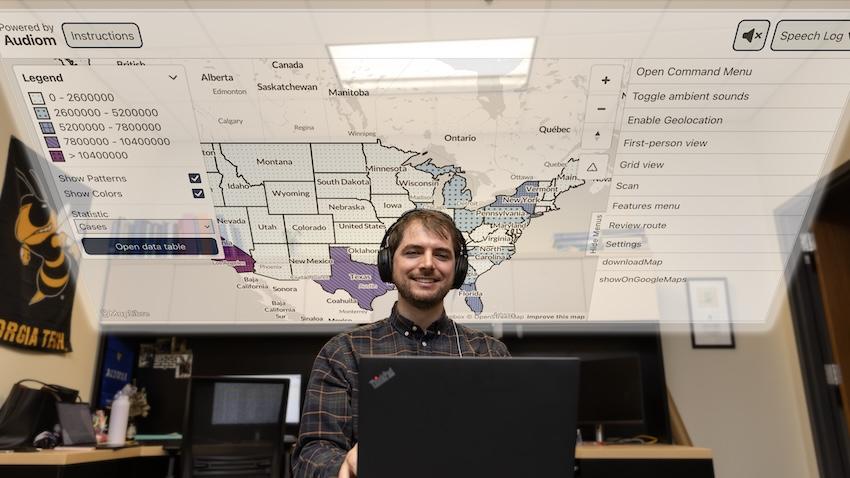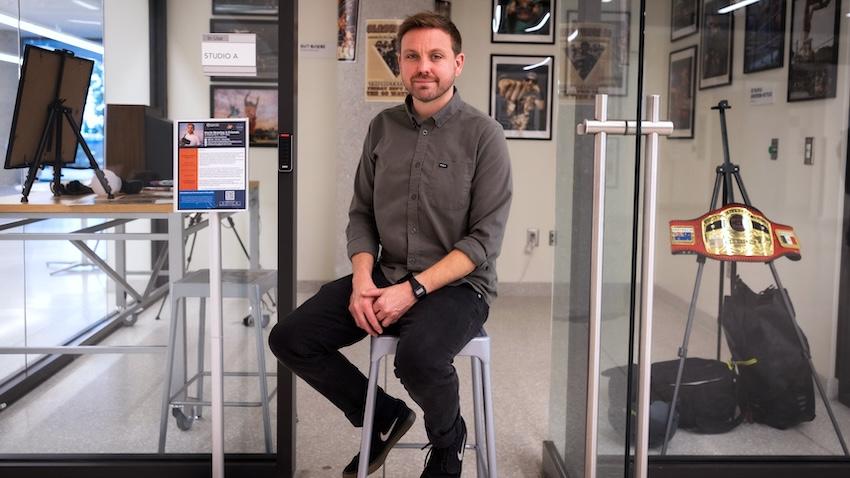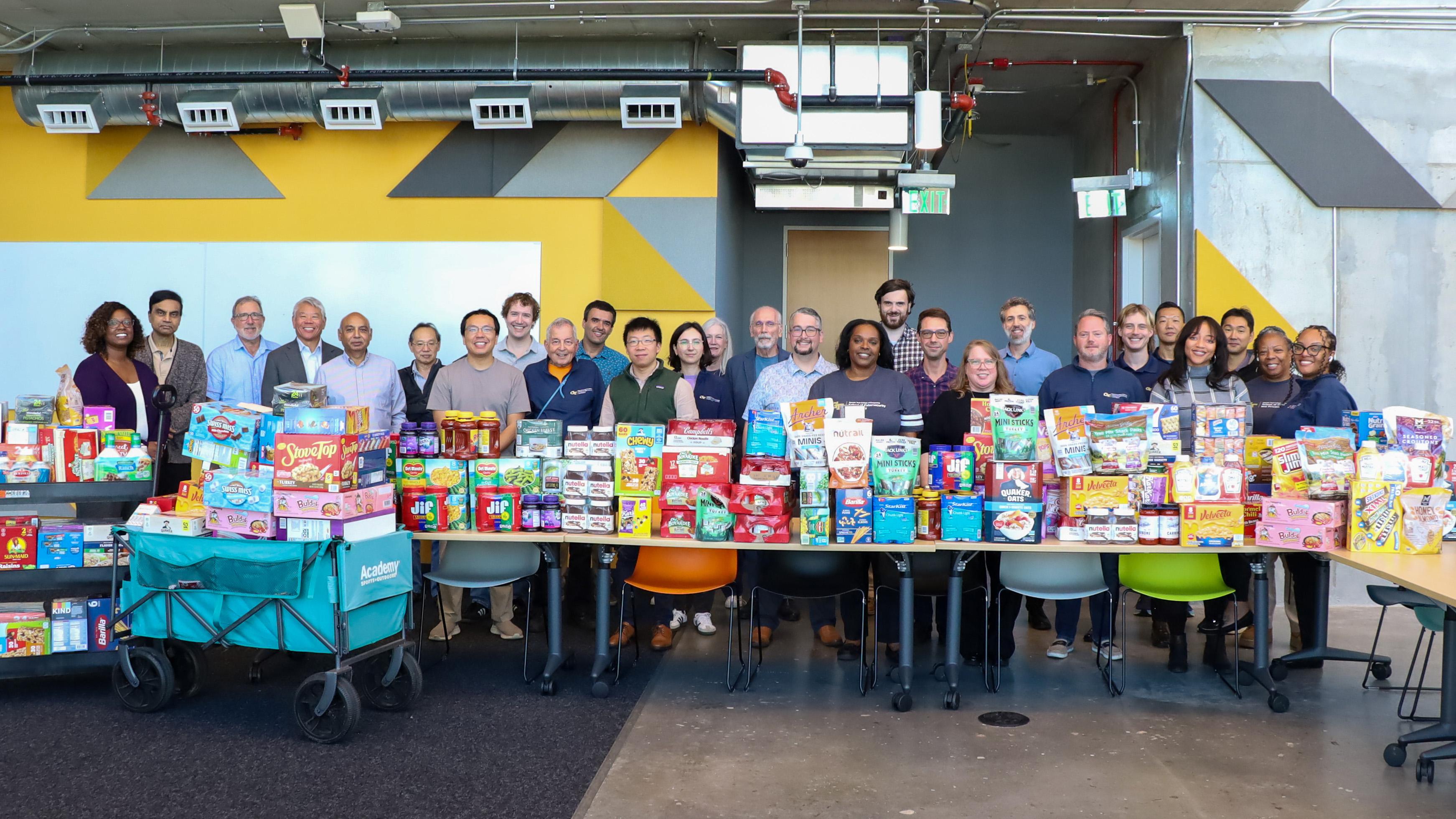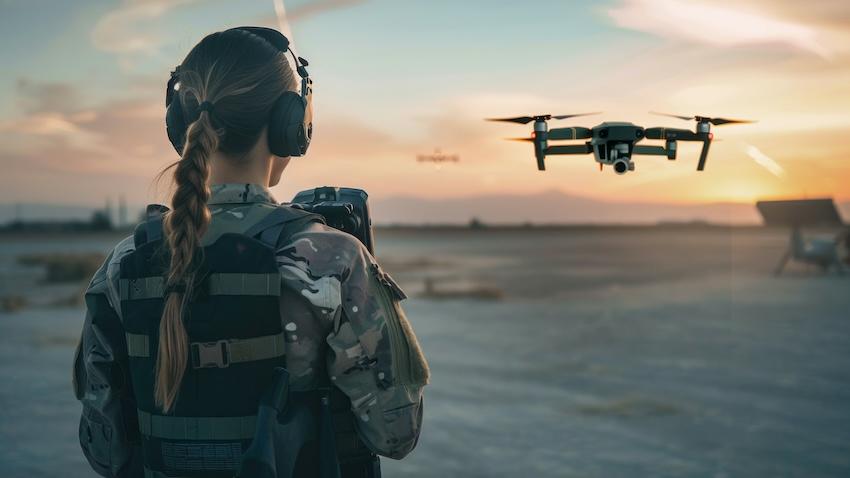
Researchers Say Stress “Sweet Spot” Can Improve Remote Operator's Performance
Military drone pilots, disaster search and rescue teams, and astronauts stationed on the International Space Station are often required to remotely control robots while maintaining their concentration for hours at a time.
Georgia Tech roboticists are attempting to identify the most stressful periods that human teleoperators experience while performing tasks remotely. A novel study provides new insights into determining when a teleoperator needs to operate at a high level of focus and which parts of the task can be delegated to robot automation.
School of Interactive Computing Associate Professor Matthew Gombolay calls it the “sweet spot” of human ingenuity and robotic precision. Gombolay and students from his CORE Robotics Lab conducted a novel study that measures stress and workload on human teleoperators.
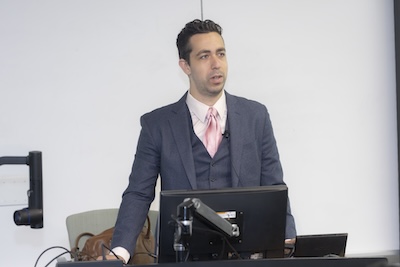
Gombolay said it can inform military officials on how to strategically implement task automation and maximize human teleoperator performance.
Humans continue to hand over more tasks to robots to perform, but Gombolay said that some functions will still require human input and oversight for the foreseeable future.
Specific applications, such as space exploration, commercial and military aviation, disaster relief, and search and rescue, pose substantial safety concerns. Astronauts stationed on the International Space Station, for example, manually control robots that bring in supplies, move cargo, and make structural repairs.
“It’s brutal from a psychological perspective,” Gombolay said.
The question often asked about automating a task in these fields is, at what point can a robot be trusted more than a human?
A recent paper by Gombolay and his current and former students — Sam Yi Ting, Erin Hedlund-Botti, and Manisha Natarajan — sheds new light on the debate. The paper was published in the IEEE Robotics and Automation Letters and will be presented at the International Conference on Robotics and Automation in Atlanta.
[Explore Georgia Tech @ ICRA 2025]
The NASA-funded study can identify which aspects of tedious, time-consuming tasks can be automated and which require human supervision. If roboticists can pinpoint the elements of a task that cause the least stress, they can automate these components and enable humans to oversee the more challenging aspects.
“If we’re talking about repetitive tasks, robots do better with that, so if you can automate it, you should,” said Ting, a former grad student and lead author of the paper. “I don’t think humans enjoy doing repetitive tasks. We can move toward a better future with automation.”
Military officials, for example, could measure the stress of remote drone pilots and know which times during a pilot’s shift require the highest level of attention.
“We can get a sense of how stressed you are and create models of how divided your attention is and the performance rate of the tasks you’re doing,” Gombolay said.
“It can be a low-stress or high-stress situation depending on the stakes and what’s going on with you personally. Are you well-caffeinated? Well-rested? Is there stress from home you’re bringing with you to the workplace? The goal is to predict how good your task performance will be. If it indicates it might be poor, we may need to outsource work to other people or create a safe space for the operator to destress.”
The Stress Test
For their study, the researchers cut a small river-shaped path into a medium-density fiberboard. The exercise required the 24 participants to use a remote robotic arm to navigate through the path from one end to the other without touching the edges.
The experiment grew more challenging as new stress conditions and workload requirements were introduced. The changing conditions required the test participants to multitask to complete the assignment.
Gombolay said the study supports the Yerkes-Dodson Law, which states that moderate levels of stress increase human performance.
The experiment showed that operators felt overwhelmed and performed poorly when multitasking was introduced. Too much stress led to poor performance, but a moderate amount of stress induced more engagement and enhanced teleoperator focus.
Ting said finding that ideal stress zone can lead to a higher performance rating.
“You would think the more stressed you are, the more your performance decreases,” Ting said. “Most people didn’t react that way. As stress increased, performance increased, but when you increased workload and gave them more to do, that’s when you started seeing deteriorating performance.”
Gombolay said no stress can be just as detrimental as too much stress. Performing a task without stress tends to cause teleoperators to become disinterested, especially if it is repetitive and time-consuming.
“No stress led to complacency,” Gombolay said. “They weren’t as engaged in completing the task.
“If your excitement is too low, you get so bored you can’t muster the cognitive energy to reason about robot operation problems.”
The Human Factor
Roboticists have made significant leaps in recent years to remove teleoperators from the equation. Still, Gombolay said it’s too early to tell whether robots can be trusted with any task that a human can perform.
“We’re a long way from full autonomy,” he said. “There’s a lot that robots still can’t do without a human operator. Search and rescue operations, if a building collapses, we don’t have much training data for robots to go through rubble by themselves to rescue people. There are ethical needs for humans to be able to supervise or take direct control of robots.”
